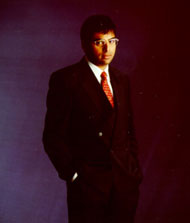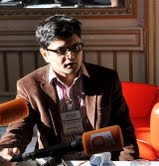
Impressions on Game 11, Anand-Gelfand world championship match, Moscow 2012.
Game 11 would be the last time that Boris Gelfand would wield the White pieces. The last chance to win on his "own terms" as it were. If there was a last shot in the locker, now was the time to use it, for some powerful game-winning novelty to appear on the board.
As the players took their places, Grandmaster Svidler pointed out that in this match, Gelfand has been playing relatively better with white than Anand. The world champion, normally so devastating with his deep, incisive white preparation has been finding it difficult to make a dent in the challenger's openings.
Recently the rot seemed to have spread to his Black "prep" as well. A distinctly wobbly show with a Nimzo-Indian Defence in Game 9 almost ended in a disaster.Now Anand had black once again. What would he do ? The Slav was being refurbished after the loss in Game 7. Would there be another sally with the Nimzo, after ironing out the kinks?
As expected Gelfand opened with his trademark queen pawn.Anand replied fearlessly with the Nimzo-Indian. According to Svidler, Gelfand is renowned for his preparation, for example, after Kasparov, the Israeli is the world's foremost handler of the Najdorf Variation. But he is much more "narrow" than Anand. This "narrowness" means that he sticks to few openings, but has a staggering knowledge and understanding of how they work.
However, it was the world champ who threw a spanner in the works. He diverged early, opting for a bishop move on the 9th move. The intention was clear. The ambitious prelate wanted to get onto the diagonal running across the board where his influence would run much deeper.
This move has been favoured by two of the greatest players never to become world champions, David Bronstein and Victor "The Terrible" Korchnoi. Bronstein, rumoured to be a relative of the great Soviet revolutionary Trotsky came heart-stoppingly close to wresting the crown from Botvinnik in 1951, leading the match by one point with two games to go. He lost the penultimate game and could only tie the scores which meant that Botvinnik retained the title.
To return to the game, this bishop manoeuvre was still a fairly popular move but perhaps was an attempt to get out of the headlights of Gelfand's theoretical knowledge.
Anand was rewarded by this innovation for Gelfand sank into deep thought. According to the experts in the commentary box, he was comparing the position to the ones stored in his memory, testing various scenarios where this new move would make a difference. This is not uncommon of course. Kasparov once spent 65 minutes on a move during his match against Karpov in Seville 87.
Still Gelfand took a rather long time. Chess is a labyrinth and sometimes one is lost in the endless recursions and inversions. On a practical level, it is generally inadvisable to spend so much time, esp as many other complex decisions lie in the future. There is a reason why coaches drill the maxim kids, "long think, wrong think" into kids.
Grandmaster Shipov was critical of Gelfand's long cogitations. He wrote, "Boris Abramovich played extremely accurately, but terribly slowly. He lost a heap of time and energy and that was just what he lacked later to play normal chess on his own."
Once he thought it through however, Gelfand played swiftly and confidently. Anand responding instantly with a prepared manoeuvre. His queen would sally forth on one flank and then travel in one motion across the width of the entire board to the other flank. Gelfand with precious little time on the clock decided to look for the exit door. According to Dirk Jan ten Guezandam, observing Gelfand's ears would indicate his "tell" - if they had turned red it meant he was under some pressure.
Gelfand triggered an exchange of queens. There were still tactical depths though. Anand's knight edged his way into the white position threatening a "family fork" - a fork being a situation when two or more units are attacked simultaneously by the same piece.
With this knight jumping about Gelfand had to be careful. The position still held nuances but after some finely judged rook moves Gelfand was able to reach the safe harbour of a draw.
He was down to 12 minutes to make the last 15 moves, but the position was on the verge of massive simplifications when Anand offered the draw. After the game there was a animated discussion between the two. Despite the tension they seem to have excellent relations, shifting from rivals to colleagues naturally and easily.
